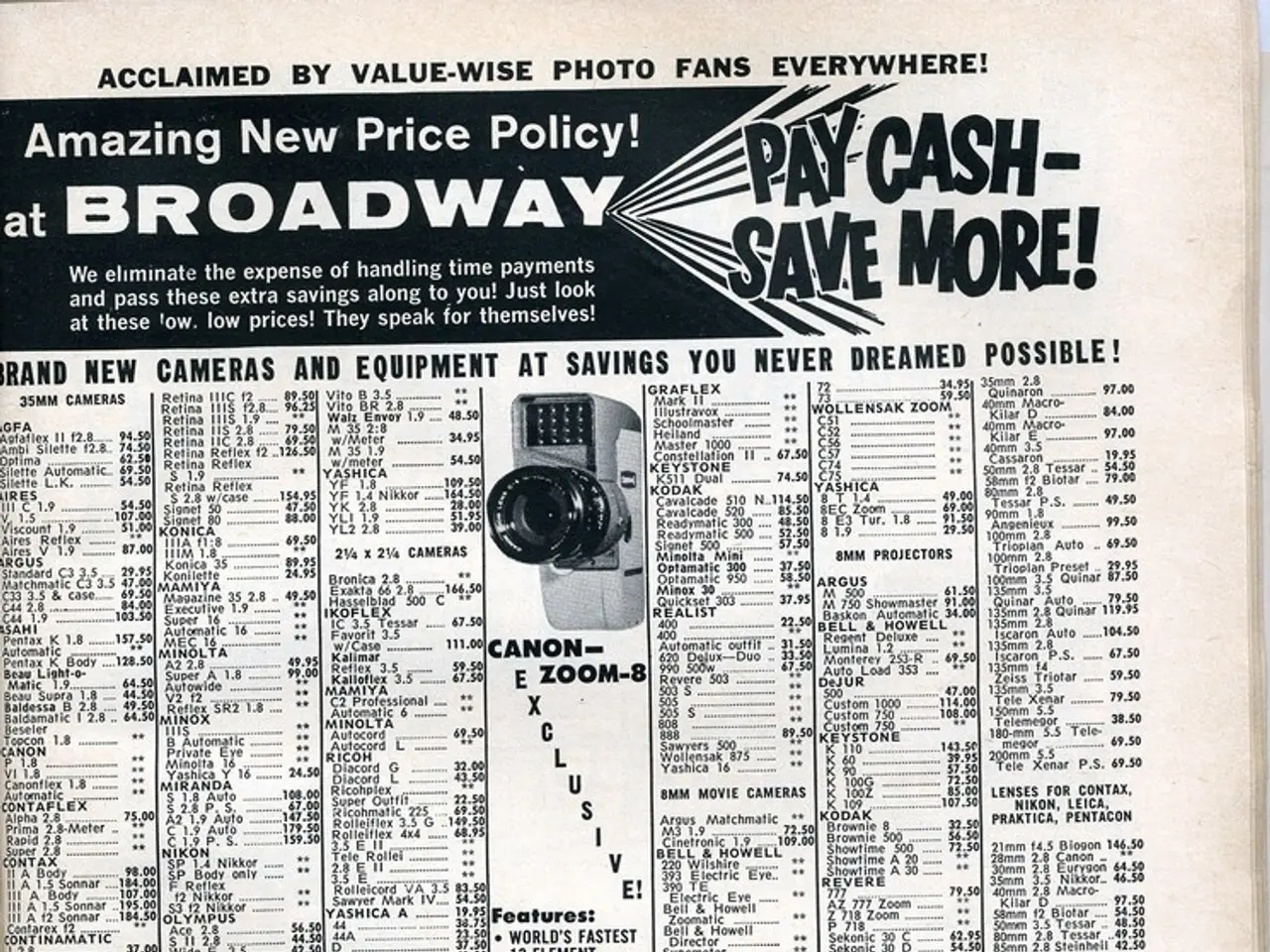Conflict between Sydney Sweeney and American Eagle reveals insights into the attitudes and behaviors of Generation Z
In the realm of marketing, striking a balance between nostalgia and inclusivity is a delicate dance. This is particularly true when it comes to Americana, a cultural concept layered with historical and social meanings. The recent Sydney Sweeney American Eagle campaign has found itself in the midst of such a controversy.
The campaign, designed to appeal to TikTok's aesthetic sensibilities, features imagery of sun-faded nostalgia, vintage muscle cars, classic denim, and a warm palette. However, it's been met with backlash from younger audiences, who find it tone-deaf and exclusionary. Gen Z, in particular, is critical of the campaign's failure to authentically represent the diversity and lived experiences that are central to their identity and worldview.
The criticism is not new. Brands navigating Americana often face similar criticisms when they lean on idealized or stereotypical images of the past that exclude marginalized groups or ignore contemporary social realities, making the messaging feel disconnected from many young consumers' realities.
Taylor Swift and Lana Del Rey, two artists who have championed Americana but on their own terms, have managed to avoid such criticism. They've shown that it's possible to romanticize dusty diners and old trucks while also spotlighting the people who've been left out of those stories for decades.
On the other hand, brands like Levi's have evolved into progressive heritage labels, focusing on sustainability, racial equity, and LGBTQ+ stories through inclusive campaigns. They've demonstrated that it's possible to preserve the essence of Americana while also embracing diverse narratives that resonate with a wide range of audiences.
The controversy around the Sydney Sweeney American Eagle ad illustrates the risk brands face when they deploy broad cultural symbols without sufficient nuance. Gen Z isn't anti-nostalgia, but they are critical of uncritical nostalgia. Instead, they're editing Americana, wanting stories that include diverse perspectives and not just base nostalgia but also explore the deeper aspects of what's being celebrated.
For example, Beyoncé's Cowboy Carter reimagines Americana with a Black feminist lens, providing a counter-narrative to the often exclusionary portrayals of the past.
In order to avoid such controversies, brands must conduct thorough social and cultural research, involve diverse creative teams, and actively listen to their communities. They must ensure their messaging is inclusive rather than alienating. Successful campaigns often incorporate authentic stories and representation that reflect the pluralistic nature of modern America, showing sensitivity to how different communities interpret national symbols, histories, and cultural references.
Moreover, 72% of Gen Z consumers believe it's important for brands to "stand for something," and 66% believe brands should acknowledge social issues. The American Eagle campaign stumbles by presenting polished visuals without context, ignoring aspects of American history like who built the roads and who was never pictured in the first place.
In conclusion, American Eagle could keep its crown as the denim of youth culture by picking up a few more passengers along the way, representing diverse perspectives in its campaigns. By doing so, they can navigate the complexities of Americana and resonate with the socially conscious, diverse Gen Z audience.
[1] Source: Various studies and news articles on Gen Z's attitudes towards Americana and brand marketing.
- In the realm of design, striking a balance between nostalgia and inclusivity is a delicate task, especially when dealing with Americana, a concept heavily influenced by history and society.
- The recent controversy surrounding the Sydney Sweeney American Eagle campaign highlights the challenges brands face when deploying broad cultural symbols without adequate context.
- Photoshop and cameras are essential tools for modern artists, allowing them to create, manipulate, and tell stories that reflect their creative vision.
- The criticism faced by the American Eagle campaign shows the need for brands to involve diverse creative teams to ensure their messaging resonates with a wide audience.
- Adobe offers a variety of design tools like Photoshop, Illustrator, and InDesign, essential for creating impactful layouts in the field of branding and marketing.
- The layout of a campaign greatly influences how users engage with the brand and interpret its message, making it a critical aspect of UI (User Interface) design.
- Social media platforms like TikTok play a significant role in shaping the lifestyle and fashion-and-beauty preferences of younger generations, influencing their perceptions of brands.
- Brands like Levi's have shown that it's possible to preserve the essence of Americana while embracing diverse narratives and stories that resonate with a wide range of audiences.
- The education-and-self-development sector has seen an increase in courses focusing on the importance of UX (User Experience) design for building brands that connect with consumers in a meaningful way.
- Politicians, celebrities, and pop-culture icons often utilize their platforms to shape public opinions on social issues, while general news outlets report on these developments, shaping public discourse and attitudes towards various topics, including branding and marketing.




